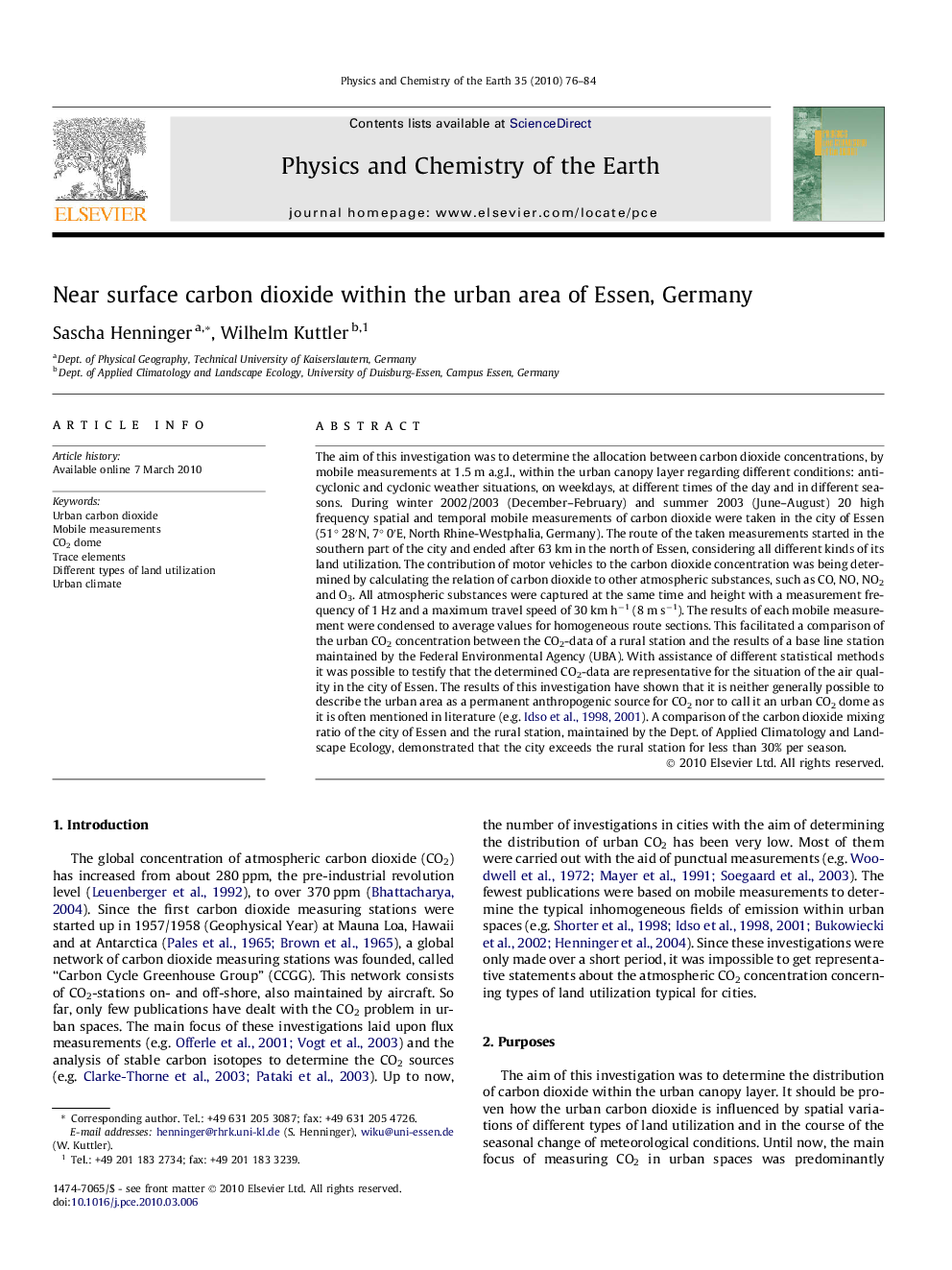| Article ID | Journal | Published Year | Pages | File Type |
|---|---|---|---|---|
| 4721426 | Physics and Chemistry of the Earth, Parts A/B/C | 2010 | 9 Pages |
The aim of this investigation was to determine the allocation between carbon dioxide concentrations, by mobile measurements at 1.5 m a.g.l., within the urban canopy layer regarding different conditions: anticyclonic and cyclonic weather situations, on weekdays, at different times of the day and in different seasons. During winter 2002/2003 (December–February) and summer 2003 (June–August) 20 high frequency spatial and temporal mobile measurements of carbon dioxide were taken in the city of Essen (51° 28′N, 7° 0′E, North Rhine-Westphalia, Germany). The route of the taken measurements started in the southern part of the city and ended after 63 km in the north of Essen, considering all different kinds of its land utilization. The contribution of motor vehicles to the carbon dioxide concentration was being determined by calculating the relation of carbon dioxide to other atmospheric substances, such as CO, NO, NO2 and O3. All atmospheric substances were captured at the same time and height with a measurement frequency of 1 Hz and a maximum travel speed of 30 km h−1 (8 m s−1). The results of each mobile measurement were condensed to average values for homogeneous route sections. This facilitated a comparison of the urban CO2 concentration between the CO2-data of a rural station and the results of a base line station maintained by the Federal Environmental Agency (UBA). With assistance of different statistical methods it was possible to testify that the determined CO2-data are representative for the situation of the air quality in the city of Essen. The results of this investigation have shown that it is neither generally possible to describe the urban area as a permanent anthropogenic source for CO2 nor to call it an urban CO2 dome as it is often mentioned in literature (e.g. Idso et al., 1998 and Idso et al., 2001). A comparison of the carbon dioxide mixing ratio of the city of Essen and the rural station, maintained by the Dept. of Applied Climatology and Landscape Ecology, demonstrated that the city exceeds the rural station for less than 30% per season.
